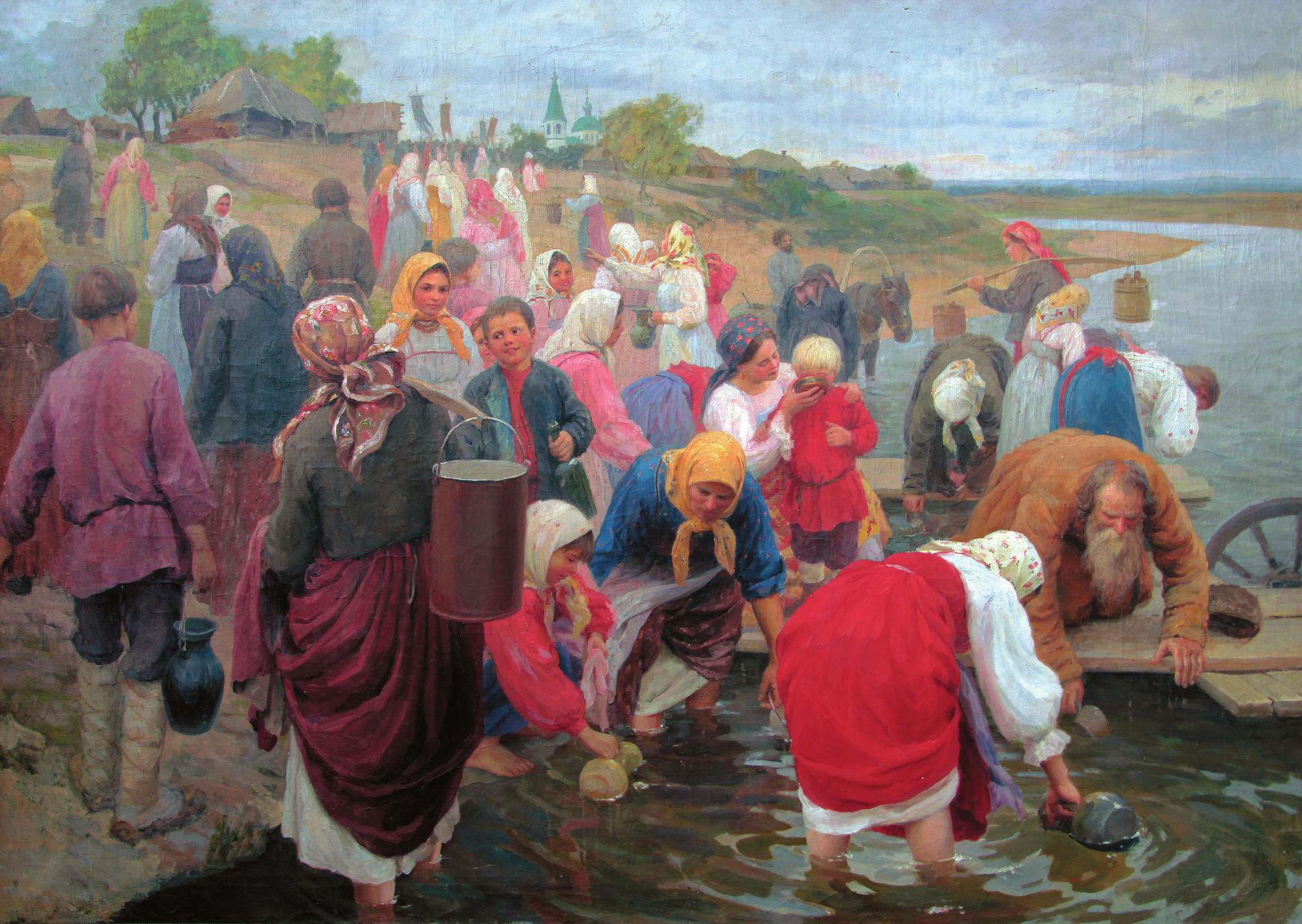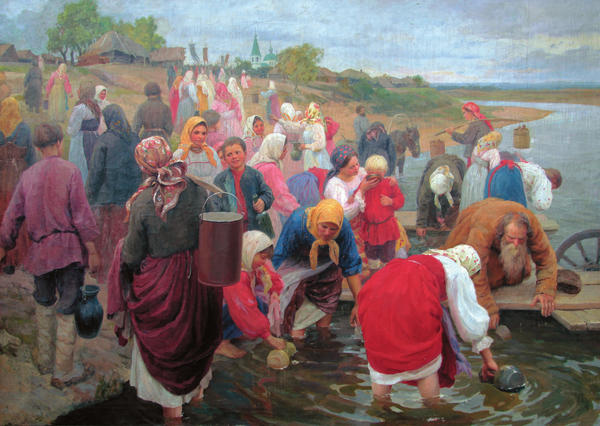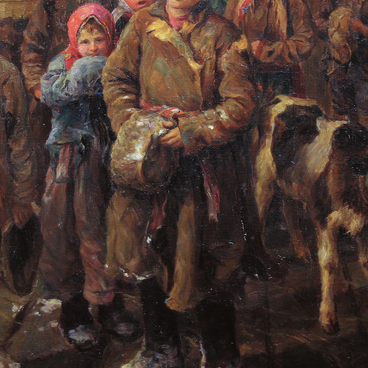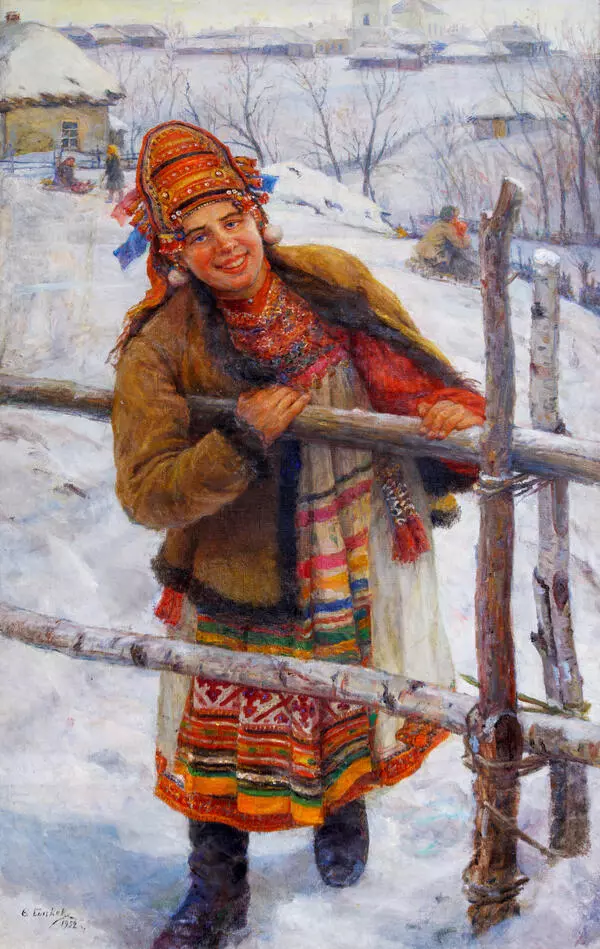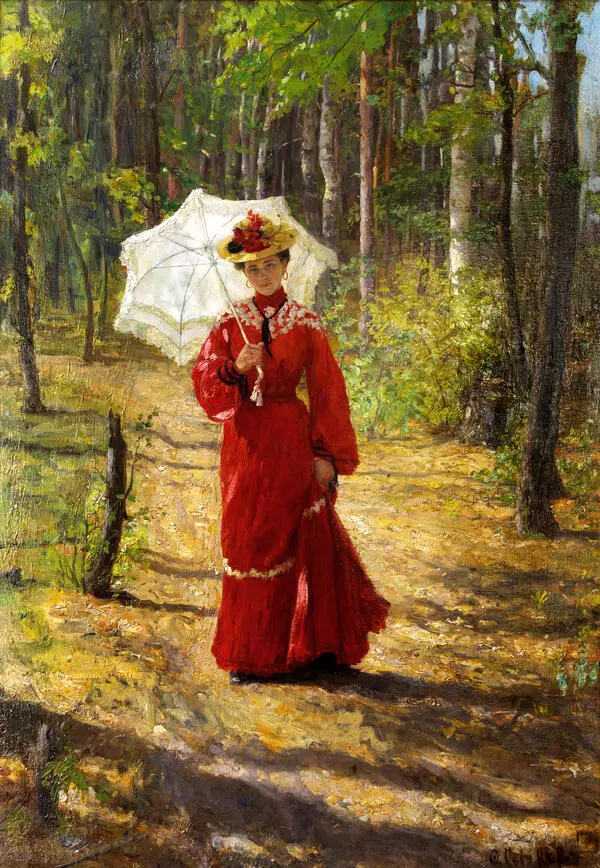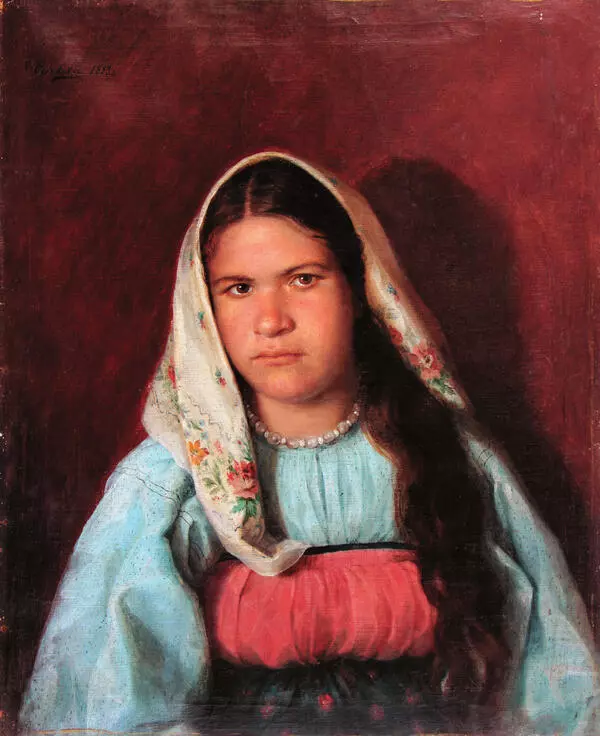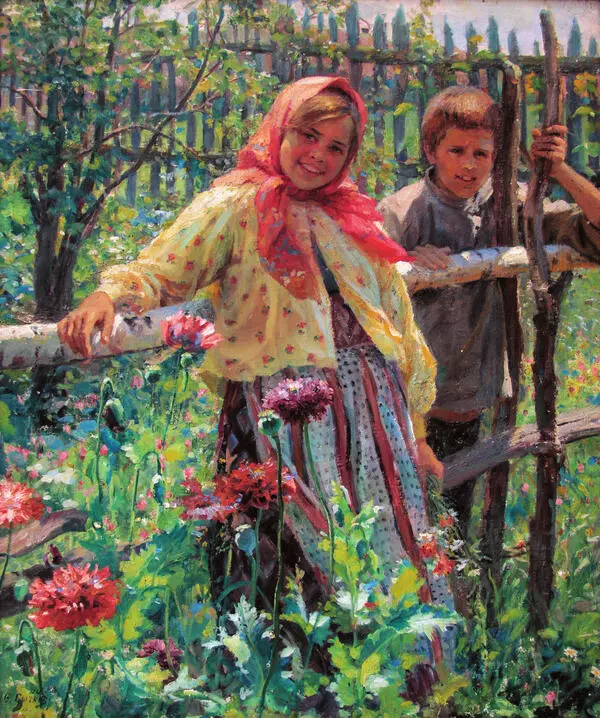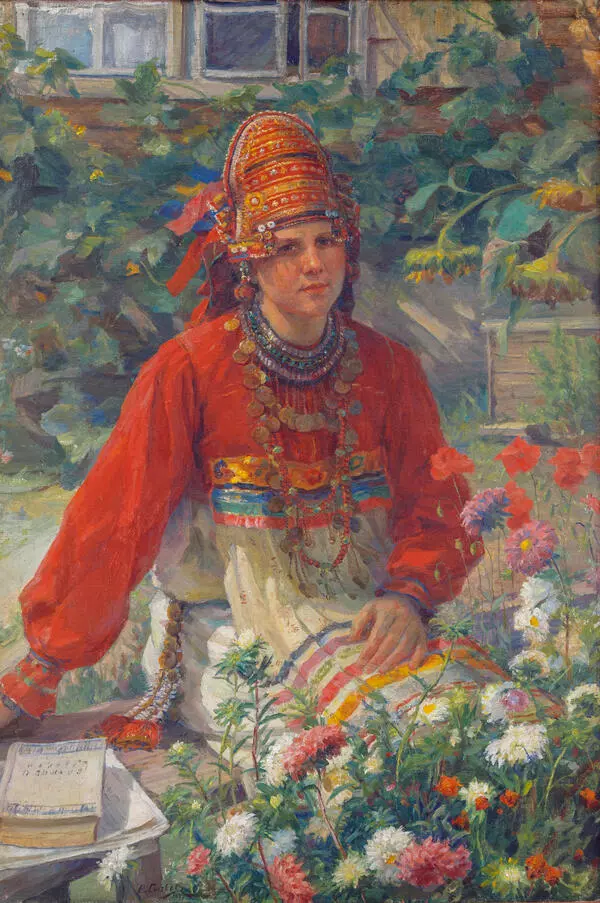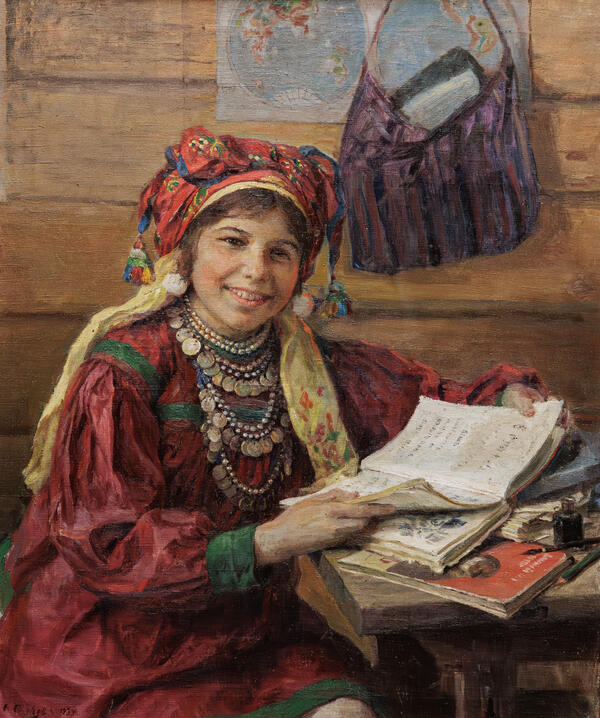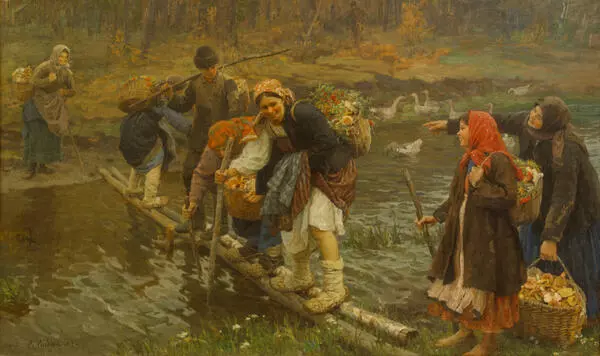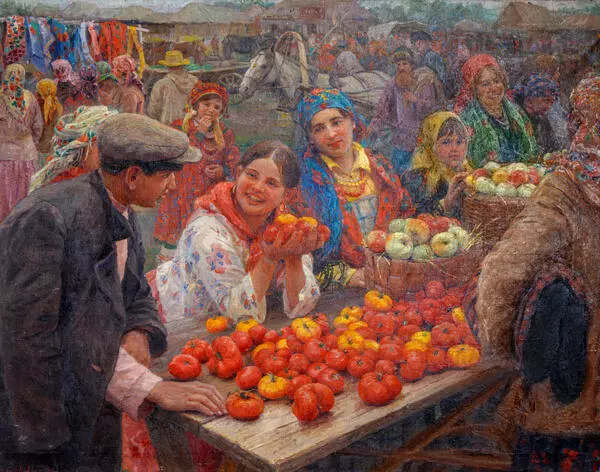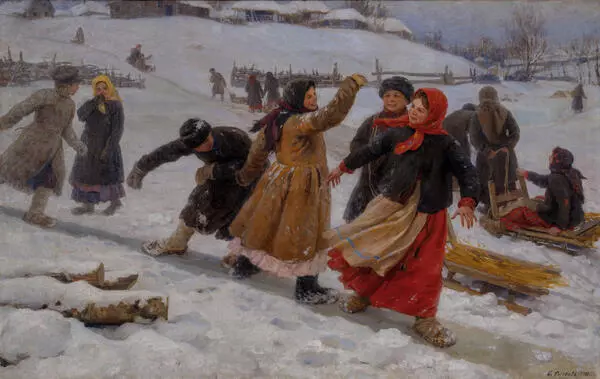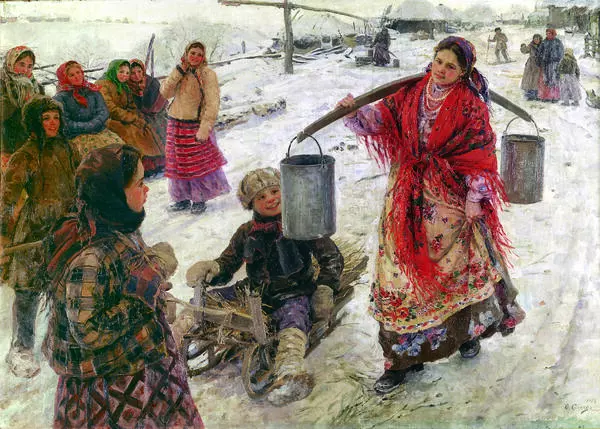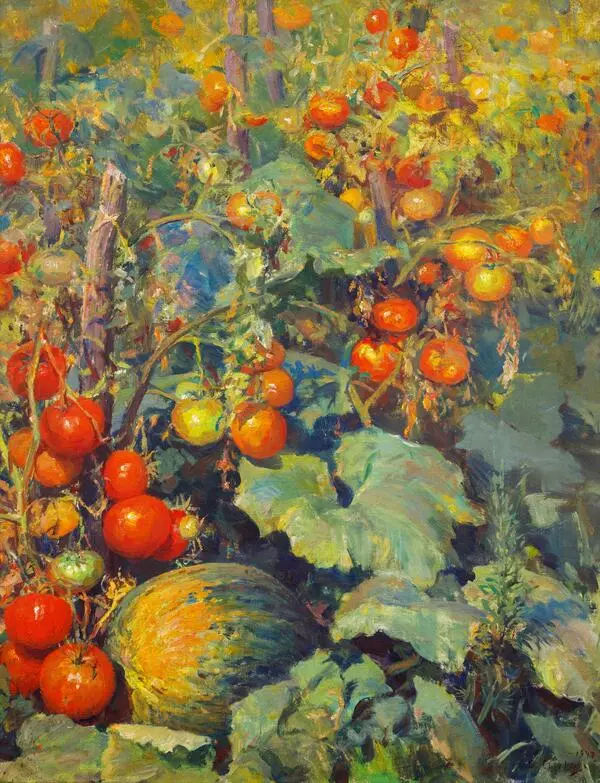‘Blessing of the Water’ is the last large canvas painted by Fedot Sychkov in Petrograd. He created it in 1916, a year before returning to his homeland. The painting is dedicated to the church rite of blessing of water — the ‘Lesser Blessing of the Water’, which the residents of his native Kochelayevo village performed on one of the days of the rural church feast. On this day, water was supposed to have beneficial properties of cleansing, healing, and protecting from ‘damage and the evil eye’. The canvas depicts a part of this ceremony — the Procession with the Cross. Almost all the residents of the village gathered near the Moksha River: people take water and carry it in buckets and jugs towards the church.
When arranging the composition, the author used an interesting technique: he compared the movement of human and water flows. Merging in the foreground, the two streams, moving on both sides of the hill, connect again in the depth of the picture near the church with the bell tower.
The depiction of religious processions was very popular among Russian painters of the 19th — early 20th centuries. In the works of artists, who followed different artistic styles, it was rendered in totally different manners — from idyllic and romantic to realistic and anti-church. Sychkov’s painting “Blessing of Waters” does not feature the problems that, for example, Vasily Perov and Ilya Repin addressed in their paintings. There is no denunciation of the existing system or any conflict in the painting — the master focused on the joyful side of life. His works on religious themes were a continuation of his favorite genre painting, slightly idealizing the life of the people. However, at the same time, no one can say that the picture depicts only an episode of the day-to-day life. The painter created a sublime multi-figure composition, where the life of people and nature correlates with the Divine. The artist sought to render his poetic vision of a religious procession, the spiritual beauty of the people.
The master painstakingly prepared the implementation of his plan, watching real church processions for a long time. The museum has preserved the studies — photos taken during the celebrations of religious feasts, the procession, the blessing of waters in the Moksha. While working on the painting, the artist honed every detail, bringing it to perfection. The appearance, gestures, and movements of the models are rendered with great accuracy and ease.
When arranging the composition, the author used an interesting technique: he compared the movement of human and water flows. Merging in the foreground, the two streams, moving on both sides of the hill, connect again in the depth of the picture near the church with the bell tower.
The depiction of religious processions was very popular among Russian painters of the 19th — early 20th centuries. In the works of artists, who followed different artistic styles, it was rendered in totally different manners — from idyllic and romantic to realistic and anti-church. Sychkov’s painting “Blessing of Waters” does not feature the problems that, for example, Vasily Perov and Ilya Repin addressed in their paintings. There is no denunciation of the existing system or any conflict in the painting — the master focused on the joyful side of life. His works on religious themes were a continuation of his favorite genre painting, slightly idealizing the life of the people. However, at the same time, no one can say that the picture depicts only an episode of the day-to-day life. The painter created a sublime multi-figure composition, where the life of people and nature correlates with the Divine. The artist sought to render his poetic vision of a religious procession, the spiritual beauty of the people.
The master painstakingly prepared the implementation of his plan, watching real church processions for a long time. The museum has preserved the studies — photos taken during the celebrations of religious feasts, the procession, the blessing of waters in the Moksha. While working on the painting, the artist honed every detail, bringing it to perfection. The appearance, gestures, and movements of the models are rendered with great accuracy and ease.
